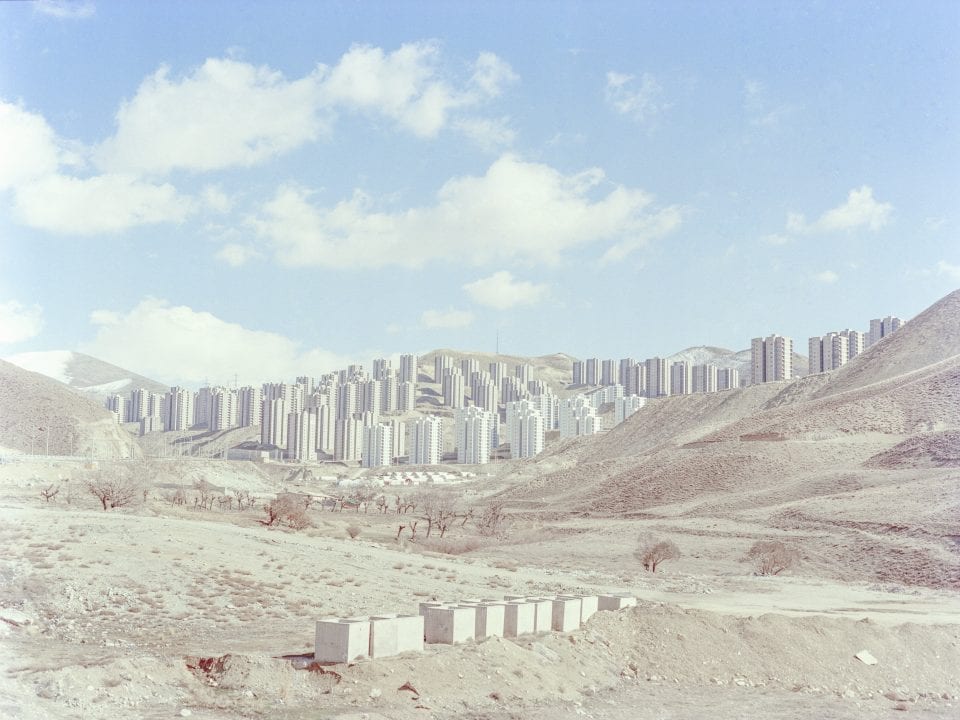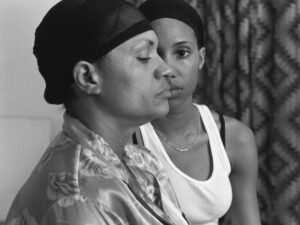The tools that are used to make great works of art are similar to those that record history. we consider the components of visual storytelling.
Susan Sontag (1933-2004) once remarked that “to collect photographs is to collect the world.” Each year, the Sony World Photography Awards, headed by the World Photography Organisation (WPO), celebrates images that meaningfully connect with audiences. The 2020 shortlist invites viewers to experience the breadth of the human condition through technical and conceptual innovation.
Yevhen Samuchenko’s otherworldly salt lakes in the Kherson region of Ukraine document microscopic algae that turns the water pink. Maximilian Mann’s Fading Flamingos series depicts an environmental disaster in Lake Urmia, Iran, where the body of water has shrunk by over 80%. Hashem Shakeri’s Cast Out of Heaven project draws attention to the current US sanctions against Iran and the subsequent fall in the value of the Rial currency, causing many Tehraners to leave the capital and move to satellite towns. Scott Gray, Founder and CEO at WPO, discusses the ethos behind the competition, and how photography, as an art form, can invite audiences to further reflect upon the world in which we live.
A: Many of your winners’ galleries are available to view online. In lockdown, the use of digital resources has grown exponentially; the demand is now for consumer time. Why should viewers log in to see these?
SG: Art is part of the wider fabric of society. It is a powerful means of communication. Sadly, we weren’t able to stage this year’s awards ceremony and exhibition, but we still have a duty to our community of photographers to share their stories and introduce their work to new audiences. For viewers, we provide a moment of relief. With this in mind, we have launched a series of initiatives via our Stay Connected and On Screen pages, which includes an in-depth look at this year’s shortlisted and finalist projects, as well as free portfolio reviews, talks and online resources. We wish we could do more, and this is only a small gesture compared to the heroic work of frontline services and volunteers, but it’s our way of playing a part in these extraordinary times.
A: What role does WPO play within photography’s wider critical discourse and developing techniques?
SG: WPO’s main ethos is to raise the level of conversation around photography and promote its appreciation. It’s a competitive and difficult landscape to navigate. Ultimately, the Sony World Photography Awards were created 13 years ago as a mechanism through which artists can get noticed by our industry-leading panel of jury, their peers, our viewers and the media. This form of validation adds value to their work, and often leads to further opportunities from publishers and gallerists. It has been a great privilege to see it grow to its current record-breaking edition of over 340,000 entries from 203 territories across the world. I believe the competition’s success is mainly down to integrity – it is free for anyone to enter and judging is completely anonymous. We acknowledge fine art and portraiture works alongside accomplished documentary and landscape photography, presenting a broad overview of approaches and techniques. We judge the image without knowing how the picture has been shot. Smartphone images are evaluated in the same capacity as, say, those taken with a DSLR camera. This is crucial because we are recording how photography is changing – embracing its accessibility whilst recognising successful images devoid of how they are shot or developed.
A: How has WPO helped to develop new talent?
SG: The Awards comprise four strands: Youth, Student, Open and Professional. Photography, as a practice, is wonderfully accessible – welcoming people of all ages and from all walks of life – so these strands were created with inclusivity in mind. It was important for us to establish these individual platforms so that different kinds of work can be judged and appreciated. The ideal scenario would be to have someone go through a developmental journey with the organisation. A great example of this would be Sam Delaware, our Youth Photographer of the Year 2016, who has since been shortlisted in 2019’s Student Competition and is also featured in this year’s Awards as a Sony Student Grant recipient.
A: Each level has a range of categories – including Architecture, Culture, Creative and Portraiture. This year, WPO added Environment to the list. Why is this important now, and what are you looking to achieve with it?
SG: We constantly review our categories to ensure that we stay relevant, whilst responding to the kind of work that is being produced across the globe. Narratives around the environment and the climate crisis are increasingly prominent in these awards, often gaining the spotlight across different strands. By introducing Environment as a brand new category, we were acknowledging these projects’ subjects as essential whilst giving them their own space in the competition.
A: How does WPO incentivise new work that might bring larger attention to the climate emergency. How can photography change the way that nature is perceived?
SG: Awards help draw attention to standout work, which, in turn, raises social awareness around key issues. A great example of this is Kieran Dodd’s Hierotopia series which came third in the Landscape category in last year’s competition. The series highlights Ethiopia’s deforestation crisis and, on the back of its media coverage, was noticed by an official from the Embassy of Ethiopia in London who came to visit the exhibition and meet with the photographer.
A: Many works document the environment, spanning expansive landscapes – both urban and natural. What do these images teach us about the breadth and complexity of our relationship with the planet?SG: Photography helps illustrate and define what, at times, are either abstract or far removed subjects. There’s a growing sense of consciousness surrounding humanity’s impact on the planet. Through the power of images, we can help to make sense of the real consequences. This is perhaps best exemplified in Edward Burtysnky’s photographs of the oil industry or Daniel Beltrá’s sweeping landscapes of degradation and trauma, presenting a contemporary take on the idea of the sublime in the shadows of human devastation.
A: Many works document the environment, spanning expansive landscapes – both urban and natural. What do these images teach us about the breadth and complexity of our relationship with the planet?
SG: Photography helps illustrate and define what, at times, are either abstract or far removed subjects. There’s a growing sense of consciousness surrounding humanity’s impact on the planet. Through the power of images, we can help to make sense of the real consequences. This is perhaps best exemplified in Edward Burtysnky’s photographs of the oil industry or Daniel Beltrá’s sweeping landscapes of degradation and trauma, presenting a contemporary take on the idea of the sublime in the shadows of human devastation.
A: There is often a thin line between defining documentary as reportage or fine art – shooting events as they happen on smartphones. With the images that are included in the awards, how are these distinguishable?
SG: We always look for a different approach to storytelling Federico Borella, our 2019 Photographer of the Year, is a very good example. His winning project, Five Degrees, focuses on male suicide in the farming community of Tamil Nadu, southern India, which is facing its worst drought in 140 years. Approaching subjects with great sensitivity, Borella uses beautifully composed still-lifes and portraits alongside documentary shots. The images invite viewers to linger and carefully examine the details. I believe this type of carefully considered work encourages quiet contemplation. These pictures deliver the message more effectively, provoking an emotional response and staying in the minds of viewers.
A: How do WPO’s initiatives support and propel artists’ careers? Can you list some success stories?
SG: We’ve had some remarkable projects over the years, including Maroesjka Lavigne, who won our 2016 Landscape category for the series Land of Nothingness, depicting the Namibian desert – one of the least densely populated places on Earth – in a subtle palette of pastels. Following her win, she was picked up by Robert Mann Gallery, New York, who published a book of her work. Tania Franco Klein, who uses staged images to explore contemporary issues, first won the National Award for Mexico in 2017 and was then shortlisted in the Creative category in 2018. She has since exhibited in galleries and art fairs all over the world. Alys Tomlinson – our 2018 Photographer of the Year – is now represented by HackelBury Fine Art, London, and a book of her winning series Ex-Voto, was published by GOST in 2019. The work encompasses formal portraiture, large format landscape and detailed still-life images of the “ex-votos”: offerings of religious devotion, found at pilgrimage sites across Europe.
A: What are some of the standout works from 2020?
SG: There’s much to be proud of in this year’s finalists in the Professional competition. Examples of significant series includes Hashem Shakeri’s Cast Out of Heaven – a beautifully shot project that looks at the lives of those forced to move out of Tehran and resettle in inadequate housing projects. The Future of Farming, by Luca Locatelli, is another expertly shot body of work that documents high-tech agro-farming systems which are being built to accommodate an estimated 10 billion people in 2050. Meanwhile, Chang Kyun Kim’s New Home sheds light on the little discussed story of the Japanese Internment Camps in the USA, in which thousands of citizens and residents of Japanese descent were imprisoned during WWII. Project 596, by Florian Ruiz, imaginatively presents landscapes of Lop Nor – a former salt lake in China previously used as a nuclear weapons test site. Finally, Disassembled Memory by Fangbin Chen is an emotive and nostalgic project in which the photographer depicts – in catalogue-like structures – the disassembled parts of his childhood bicycle, in order to preserve memories.
A: What’s the best piece of advice or inspiration that you can offer to photographers working today
SG: Edit, edit, edit! Carefully consider the images that you choose to help tell your story, and always keep your audience in mind whilst doing this. Also, try and get your name and work out there as much as possible. Awards are a great way of gaining instant recognition and visibility. However, self-publishing, grant and residency applications, independent fairs, exhibitions and a strong digital profile are also important aspects of building your brand.
Kate Simpson









